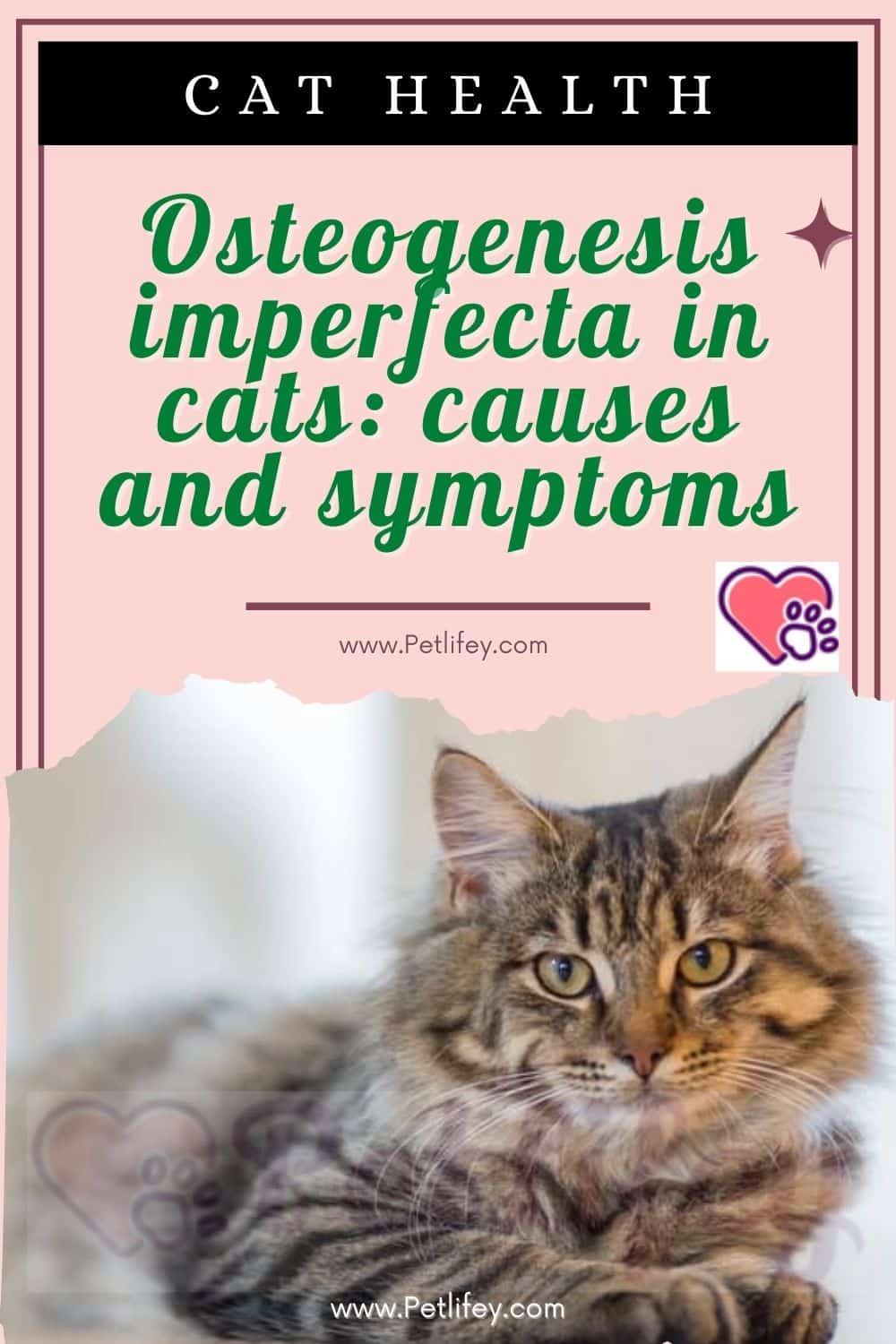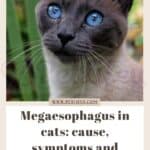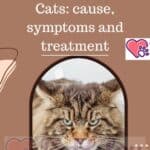Osteogenesis Imperfecta in Cats: Understanding Causes and Recognizing Symptoms
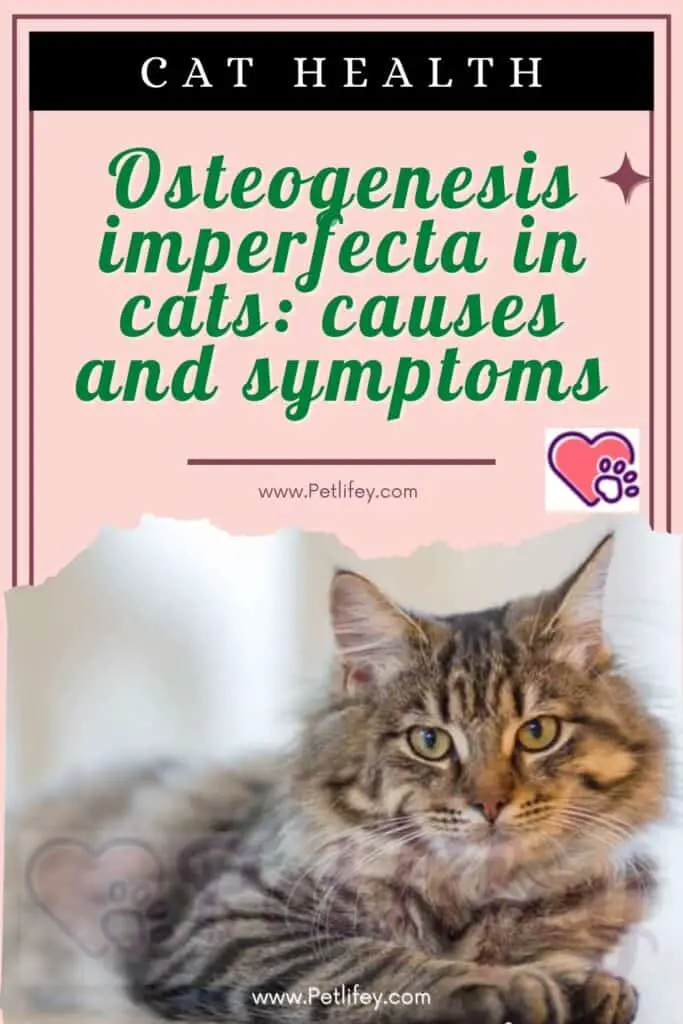
Osteogenesis imperfecta, commonly known as brittle bone disease, is a genetic disorder that affects the integrity of bones, leading to increased fragility and susceptibility to fractures. In cats, this condition is caused due to a defect in the production of collagen, an essential protein that provides structural support to the bones. As a feline owner, it is imperative to understand both the causes and symptoms to manage the wellbeing of your cat if they are affected by this disorder.
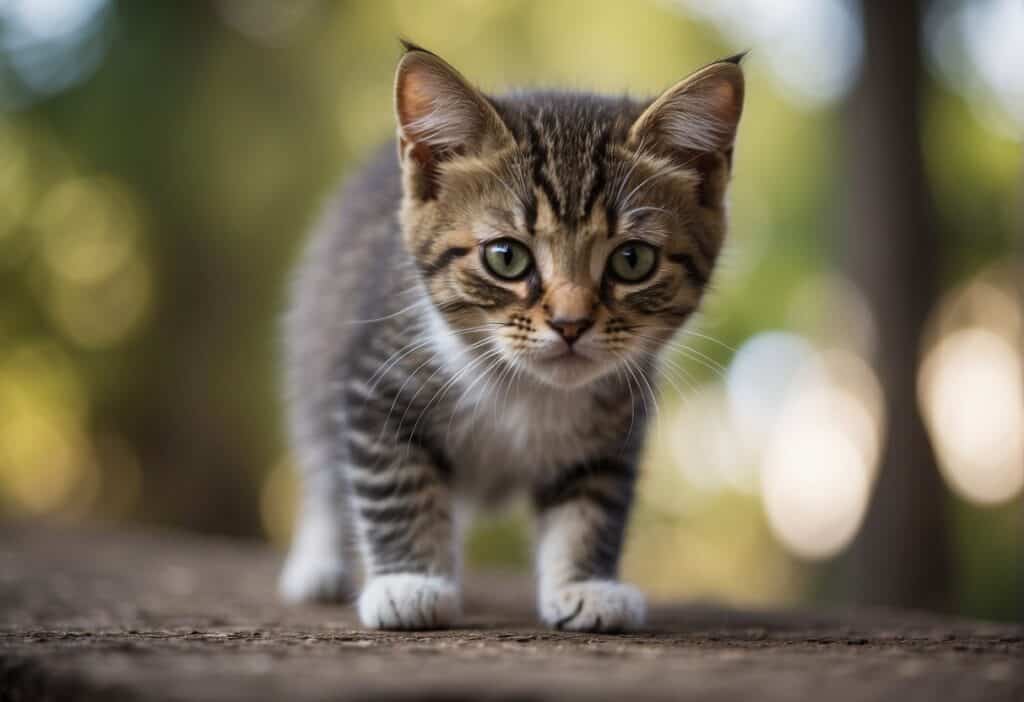
Your cat may exhibit signs of osteogenesis imperfecta that range from mild to severe. Notable symptoms include a tendency for bones to fracture easily, which might occur with minimal or no apparent trauma. Some cats may also present with distinctive physical characteristics such as blue-tinged sclera, the thin and translucent part of their eyes. Additionally, you might notice dental issues, as the condition can sometimes affect teeth development, leading to abnormalities.
Given that osteogenesis imperfecta is an inherited disorder, your cat’s risk of developing it is determined by their genetic background. Male cats are at a higher likelihood of exhibiting symptoms. It’s crucial for you, as a caretaker, to be aware of your cat’s condition and to provide them with a safe environment that minimizes the chance of injury. Regular veterinary check-ups are vital in monitoring the health and quality of life for a cat with this disorder.
Genetic Basis of Osteogenesis Imperfecta
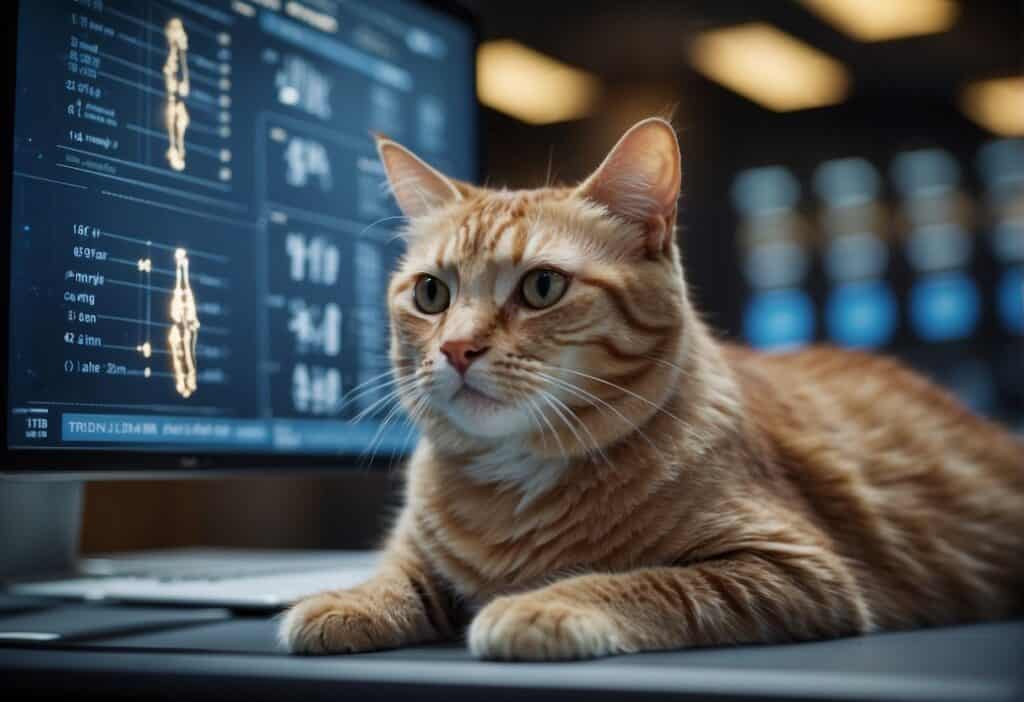
Osteogenesis Imperfecta (OI) in cats is a genetic disease primarily associated with mutations affecting type I collagen, a crucial protein for the strength and integrity of bones. Understanding the genetic underpinnings is key to grasping the hereditary nature of this condition.
Genes and Mutations Involved
Type I collagen is composed of two alpha-1 chains encoded by the COL1A1 gene and one alpha-2 chain encoded by the COL1A2 gene. Mutations in COL1A1 or COL1A2 disrupt the formation and structure of type I collagen, leading to the brittle bones typical of OI.
Beyond collagen-related genes, mutations in genes responsible for post-translational modification of collagen, such as CRTAP, LEPRE1, PPIB, SERPINF1, SERPINH1, and FKBP10, have also been implicated. Ongoing research continues to uncover the roles of different genetic mutations in the presentation of OI.
Inheritance Patterns
OI in cats can be inherited in an autosomal dominant or, less commonly, an autosomal recessive manner. In autosomal dominant cases, it only requires one copy of the mutated gene from either parent to cause the disorder. This is the most typical inheritance pattern noted.
Autosomal recessive inheritance occurs when a kitten receives a copy of a mutated gene from both parents. Less commonly investigated in feline OI than in humans, it requires both parents to be carriers or affected by the recessive mutation. A family history of OI increases the risk of offspring inheriting the condition. An understanding of these patterns is crucial for breeders and veterinarians who manage the reproductive planning and treatment of affected cats.
Classification of Osteogenesis Imperfecta
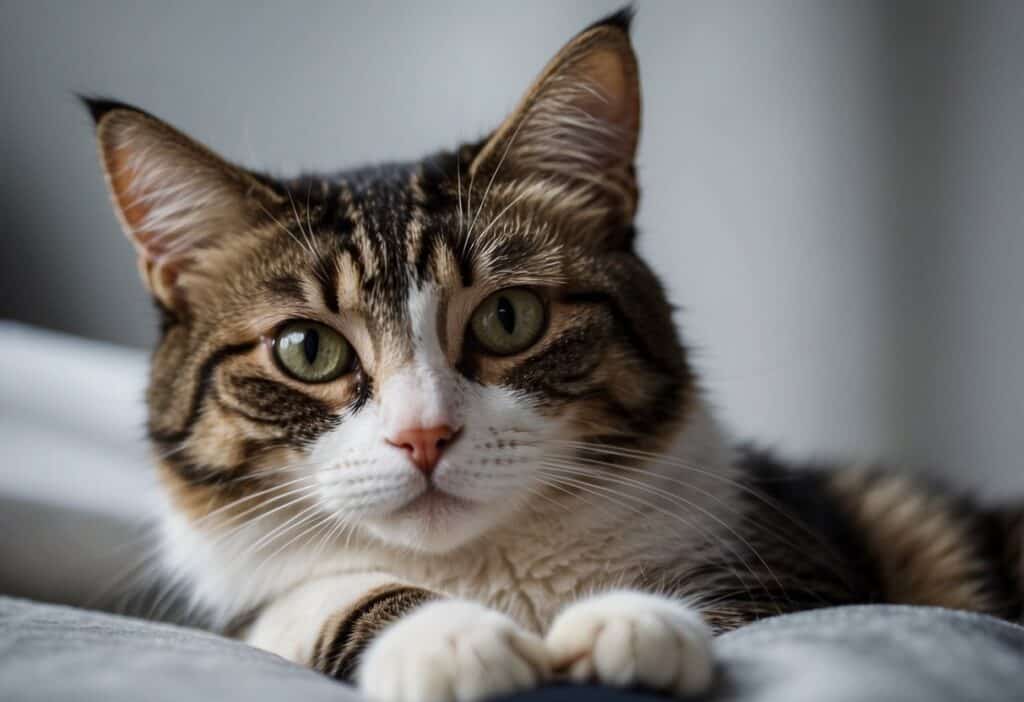
Osteogenesis Imperfecta (OI) is a complex condition with classifications that range from Type I to Type VIII, each differing in severity and characteristics. Your understanding of these types is crucial in recognizing the broad spectrum this genetic disorder covers.
Type I to Type VIII
OI is categorized into at least eight types, delineated primarily by genetic causes and clinical features:
- Type I: Typically the mildest form of OI. It is characterized by bone fragility, minimal deformities, and a near-normal stature.
- Type II: Known as the most severe, often resulting in perinatal death due to extreme fragility of bones.
- Type III: This type is severe, with individuals presenting progressively deforming bones and a short stature.
- Type IV: Exhibits moderate severity with varying degrees of bone fragility and growth disturbances.
- Type V: Revealed to have hyperplastic callus formation and calcification of the interosseous membrane of the forearm.
- Type VI: Identified by a mineralization defect, making it a unique form of the disorder.
- Type VII: Distinguished by rhizomelic limb shortening.
- Type VIII: Extremely rare and typically leads to severe growth deficiency and under-mineralization of bones.
The classification system has been refined over time by researchers such as Marini JC, Byers PH, Pyott SM, Grafe I, and Lee B, with findings frequently disseminated through respected sources including PubMed.
Severity Spectrum
The severity of OI can range from mild forms, such as Type I, characterized by a predisposition to fractures but often with normal life expectancy, to the most severe forms, like Type II, which can be lethal at or shortly after birth due to extreme fragility and poorly formed bones. Types III and IV are severe and moderate respectively, both affecting quality of life and mobility.
It’s important for you to recognize that this classification not only serves as a diagnostic tool but also helps in tailoring management and treatment strategies specific to the type of OI one has.
Physical Manifestations in Cats
In cats with osteogenesis imperfecta, you’ll notice a range of distinct physical signs that stem from the disorder’s effect on their connective tissues, particularly the bones and teeth.
Skeletal Symptoms
Cats affected by osteogenesis imperfecta exhibit characteristic skeletal symptoms due to their fragile bones. You may observe:
- Multiple fractures: Repeated bone fractures can occur with minimal or no apparent trauma.
- Brittle bones: Bones are more prone to breakage because they lack the usual strength and resilience.
- Bowing of long bones: Legs may have an abnormal curvature, a sign of compromised bone integrity.
- Bone abnormalities: Unusual bone structures, such as coxa vara, a condition where the thigh bone is angled more towards the body, may develop.
- Loose joints and tendons: Joints may appear more flexible or loose, and tendons may not hold bones in the correct alignment.
Notable Signs:
| Condition | Description |
|---|---|
| Fractures | Broken bones often with no clear injury cause. |
| Bone Fragility | Easily broken bones indicating brittle quality. |
| Bowing | Curved limbs indicative of weakened long bones. |
| Bone Abnormalities | Structural deviations including coxa vara. |
Dental and Ocular Signs
Apart from the skeletal system, osteogenesis imperfecta in cats affects other areas, including dental and ocular health:
- Dentinogenesis Imperfecta: Your cat’s teeth may be brittle, misshapen, or discolored due to abnormal dentin formation.
- Blue Sclerae: The whites of the eyes, known as the sclera, might present a bluish hue, signifying thinness and fragility in this connective tissue area.
Specific Indicators:
| Aspect | Manifestation |
|---|---|
| Teeth | Brittle, misshapen, or discolored due to weak dentin. |
| Sclera | A blue tint to the normally white area around the eye. |
While these symptoms may help indicate osteogenesis imperfecta, veterinary consultations and diagnostic imaging are essential for a proper diagnosis and management plan.
Clinical Presentation and Diagnostics
In the assessment and diagnosis of Osteogenesis imperfecta (OI) in cats, your veterinarian will systematically evaluate clinical symptoms and utilize specific diagnostic tests to determine the presence and severity of the disease.
Assessment of Symptoms
Your cat may exhibit various symptoms indicative of OI, such as:
- Recurrent Fractures: Frequent bone fractures often result from minimal or no apparent trauma.
- Bone Deformities: Visible bending or deformities in bones, suggesting abnormal bone development.
- Hearing Loss: OI can affect the bones in the middle ear, leading to partial or complete hearing loss.
- Height and Growth: Affected cats may show stunted growth or a smaller stature compared to healthy peers.
In addition to these physical signs, be aware of less obvious symptoms such as intermittent lameness, which may shift from limb to limb.
Diagnostic Imaging and Tests
Your veterinarian will use a combination of the following diagnostic tools:
- Radiographs: X-rays can reveal both new and old fractures, cortical thinning, and bone deformity.
- Blood Tests: Analysis to measure levels of calcium, phosphorus, and vitamin D, which are critical for bone health.
While symptoms provide crucial initial indicators, imaging and blood tests render a more precise picture of your cat’s bone health, necessary to accurately diagnose OI. Research on animal models, particularly mouse models, helps in understanding the genetic cause of the disease, and might inform future diagnostics.
Although there are no cures for genetic abnormalities like those involving sclerostin linked to OI, early and accurate diagnosis allows for better management of the condition and an improved quality of life for your cat.
Management and Therapeutic Strategies
In managing Osteogenesis Imperfecta (OI) in cats, your aim is to improve their quality of life through alleviating symptoms and preventing injury. This involves a combination of medication and supplements directed toward strengthening bones and surgical or supportive measures to deal with fractures and bone deformities.
Medication and Supplements
Bisphosphonates are often the cornerstone of pharmacological treatment, which help in increasing bone density and reducing fracture rates. These medications may contribute to an improvement in your cat’s height and decrease the likelihood of short stature over time.
- Alendronate: Given orally, this may enhance bone mass and promote skeletal growth.
- Pamidronate: Administered intravenously can help in pain management and improve mobility.
Supplements such as calcium and vitamin D are essential in supporting bone health, but you should administer them under a veterinarian’s advice to avoid negative consequences.
- Calcium: Crucial for bone mineralization.
- Vitamin D: Facilitates calcium absorption.
Surgical and Supportive Care
Surgical interventions may be necessary to fix fractures and correct bone deformities such as scoliosis (curved spine). Surgery might also be considered for improving mobility and training weak muscles.
- Rods: Insertion of telescoping rods can stabilize long bones.
- Fracture Repair: Can involve pins, plates, or screws as needed for stabilization.
Supportive Care includes a range of non-surgical options aimed at preserving your cat’s mobility and managing symptoms.
- Physical Therapy: To maintain muscle strength without overstraining the fragile bones.
- Mobility Aids: Custom braces or wheelchairs can help cats with compromised mobility.
Always consult with a veterinary specialist experienced in OI for tailored strategies and involvement in potential clinical trials that explore new treatments.
Complications and Comorbidities
When you’re caring for a cat with osteogenesis imperfecta (OI), be aware of potential complications and coexisting conditions that may arise due to the disease’s nature. OI affects the production of collagen in the body, leading to fragile bones and potential issues in various body systems.
- Breathing Problems: Your cat’s bone fragility extends to the ribcage. A barrel-shaped rib cage can restrict lung expansion, leading to potential respiratory issues.
- Bruising: The skin may bruise easily due to the underlying collagen deficiency, but this should not be mistaken for external injuries.
- Facial Deformity: Some cats with OI may have a triangular-shaped face, which results from irregular bone development.
- Spinal Abnormalities: Be observant for signs of a curved spine, or scoliosis, which could affect your cat’s mobility and comfort.
| Potential Complications | Description |
|---|---|
| Breathing Difficulties | Restrictions in chest expansion due to a misshapen ribcage may cause respiratory complications. |
| Easy Bruising | Due to fragile vessels, your cat’s skin might show bruises frequently. |
| Facial Deformities | A triangular facial shape might be noticed because of altered bone growth. |
| Spinal Curvature | Monitor for symptoms of scoliosis, which could complicate your cat’s movements. |
Under the guidance of a veterinarian, you should monitor your cat for these issues. Immediate veterinary attention is necessary if you notice any changes in breathing, posture, or skin integrity, to manage these complications effectively.
Prognosis and Quality of Life
Your cat’s prognosis with Osteogenesis Imperfecta (OI) varies widely due to the heterogeneity of the disorder. Different cats will experience the condition with varying severity, influencing their overall quality of life.
For cats with a milder form of OI, they may live relatively normal lives with minimal intervention. However, you must be mindful of mild trauma, as even everyday activities could potentially cause fractures due to their fragile bones.
Management and Care:
- Monitor for and minimize risk of injury
- Administer pain relief as prescribed
- Consider surgery for fracture repair
- Provide supportive care and regular veterinary check-ups
Your cat may develop contractures, a condition where muscles and tendons shorten, resulting in restricted movement. Contractures can further affect their mobility and quality of life. Regular, gentle exercise under veterinary guidance can help maintain mobility and muscle tone.
In severe cases, where bones are extremely fragile, your cat may face recurrent, debilitating fractures that can lead to a poor quality of life. For kittens born with OI, underdeveloped lungs at birth can be a significant concern, potentially leading to perinatal mortality.
Key Considerations for Quality of Life:
- Degree of bone fragility
- Frequency of fractures
- Presence of contractures
- Lung development (in severe neonatal cases)
It’s essential that you work closely with your veterinarian to tailor a comprehensive care plan. Your commitment to creating a safe environment for your cat and adhering to veterinary advice is fundamental in managing their condition and enhancing their quality of life.
Research and Future Directions
Your understanding of Osteogenesis imperfecta (OI) in cats is evolving, thanks to ongoing research. Clinical research on OI is primarily published on platforms like PubMed. This collective knowledge is critical for identifying spontaneous mutations and developing treatments.
Current Research:
- Identification of genetic markers for OI in cats is a key focus, expanding the understanding of hereditary and spontaneous mutations.
- Studies on different therapeutic interventions are ongoing, with some aimed at improving bone density and strength.
Advancements in this Field:
| Area of Progress | Description |
|---|---|
| Genetic Mapping | Pinpoints mutations in cats, contributing to targeted treatments. |
| Therapeutic Trials | Assesses the efficacy of various drugs on bone fragility. |
| Diagnostic Improvements | Refines methods for early detection to manage symptoms proactively. |
Future Directions:
- Gene editing: Research may soon allow precise correction of defective genes causing OI.
- Customized Treatments: Tailored therapies based on individual genetic profiles might become standard.
- Disease Management: Improvements in supportive care can enhance the quality of life for affected cats.
You can expect research in this area to drive better diagnostic, therapeutic, and management strategies for OI in cats. With advanced genetic technologies, the future holds promise for more effective treatment options, possibly preventing the condition in high-risk breeds.

